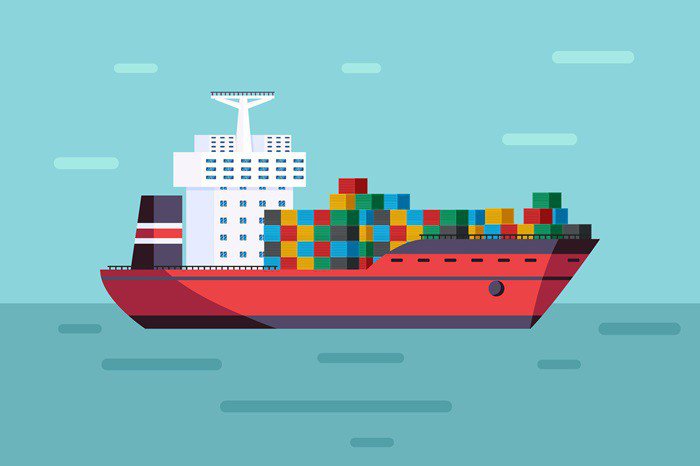
Effective and affordable goods transportation is essential for businesses to maintain competitiveness in the modern, interconnected global economy. Transportation costs can be impacted by the various processes involved in shipment logistics, each with its own costs and fees.
You must thoroughly understand the nuances involved to successfully navigate through these charges, particularly related charges and freight. This extensive guide explores the key components of examining all relevant fees and freight in a shipment.
Understanding The Basics: Freight And Related Charges
When discussing shipments, the term "freight" refers to the price of moving goods from one place to another. It includes a range of costs, including those for handling, transportation, insurance, and any additional services that might be necessary. On the other hand, associated costs are any fees, surcharges, or expenses related to the transportation process. Carriers, shipping firms, or governmental regulations may impose these fees.
Step-By-Step Guide To Checking Related Charges And Freight
Identify the Parties Involved
Identifying all the parties involved in the transportation process is crucial before going into the specifics of related fees and freight. This includes the shipper (the person or organization that sends the goods), the carrier (the organization in charge of transporting the goods), and the consignee (the person or organization that receives the goods).
Determine The Mode Of Transportation
The mode of transportation significantly influences the costs associated with a shipment. Every mode of transportation, including air, ocean, road, and rail, has a unique cost structure and associated fees.
Analyze The Freight Charges
The majority of the overall transportation expense is made up of ocean freight charges. These fees are frequently computed using shipped items' weight, size, and volume. It is critical to understand how freight charges are calculated and whether other factors impact the price because carriers may use different pricing models.
Scrutinize Related Charges
The complexities of shipping costs are present in related charges. These fees may comprise, but are not limited to:
- Fuel Surcharges: To offset the resulting rise in operating expenses, carriers may impose fuel surcharges in response to fluctuations in fuel prices.
- Security fees: Some shipments may need extra security measures, resulting in security-related fees.
- Customs and duties: For international shipments, customs charges and import duties can significantly impact the final price.
- Handling Fees: Fees associated with the loading, unloading, and handling of cargo at various locations along the route.
- Delivery Area Surcharges: Carriers may impose extra fees if the destination is remote or inaccessible.
- Liftgate Services: If the location is without a loading dock, liftgate services may be required, resulting in additional costs.
Consider Additional Services
Depending on the shipment's characteristics, you might need extra services like accelerated delivery, temperature-controlled transportation, or hazardous material handling. There are separate fees associated with these services that must be considered when calculating the overall cost.
Review Documentation
It is crucial to go over all of the carrier-provided documentation carefully. The terms and conditions of the shipment, such as the agreed-upon fees, are described in the bill of lading, for instance. Before the shipment is begun, any discrepancies between the documentation and the agreed-upon terms should be resolved.
Request A Cost Breakdown
Asking the carrier or shipping firm for a thorough breakdown of the costs is always a good idea. This explanation of each charge's calculation and coverage should give readers a clear understanding of how it works. This is a fantastic chance to find any potential mistakes or overcharges.
Utilize Technology And Tools
The shipping cost can be calculated and understood in the digital age with the help of various tools and software programs. Platforms for tracking shipments, cost estimators, and freight calculators can offer up-to-the-minute information on fees and shipment status.
Negotiate And Optimize
Remember that many fees are negotiable, particularly if you have a history of working with the carrier or shipping company. It is beneficial to enter into negotiations to optimize the cost structure while ensuring that the service level is not compromised.
Keep Abreast Of Industry Changes
The logistics and transportation sector is dynamic, with rules, fees, and costs changing over time. You can make better decisions and foresee potential cost fluctuations by staying informed about industry trends and changes.
Conclusion
Translating the complex web of associated fees and freight in the world of shipment logistics is a task that demands diligence and close attention to detail. To ensure that you are well-informed and well-prepared when evaluating shipping costs, it is essential to have a clear understanding of the fundamentals, conduct in-depth analyses of charges, and effectively use tools and resources. You will be better prepared to negotiate the complexity of related fees and freight if you adhere to the step-by-step instructions provided in this article. This will ultimately result in more economical and effective transportation of your goods.





 Get instant quote
and compare offers in real time
Get instant quote
and compare offers in real time